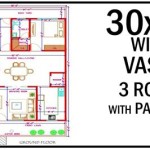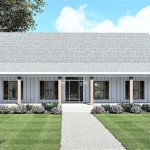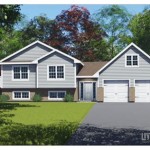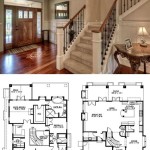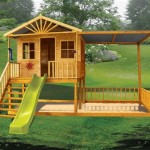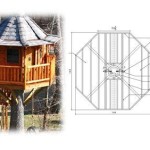Exploring Tiny House Plans: A Guide to Compact Living
The tiny house movement has gained significant momentum in recent years, driven by factors such as affordability, environmental consciousness, and a desire for a simpler lifestyle. A core element of embracing this movement lies in selecting the right tiny house plan. These plans dictate the structure, layout, and functionality of the dwelling. This article explores various aspects of tiny house plans, providing a comprehensive overview for individuals considering this alternative housing option.
Tiny house plans differ substantially from traditional house blueprints. They are designed to maximize space efficiency within a significantly smaller footprint, typically ranging from 100 to 400 square feet. Due to this limited space, careful consideration must be given to every square inch, ensuring functionality and comfort. The selection of a suitable plan hinges on individual needs, lifestyle, and intended use of the tiny house.
Key Considerations When Choosing a Tiny House Plan
Before delving into specific plan types, several critical factors should be considered to ensure the chosen design aligns with individual requirements and regulatory guidelines. These factors directly impact the functionality, legality, and overall satisfaction with the tiny house.
Local Building Codes and Zoning Regulations: This is perhaps the most crucial aspect to address. Tiny house construction is subject to varying regulations depending on the location. Some municipalities may have minimum size requirements for dwellings, while others might have restrictions on foundation types or the presence of a kitchen and bathroom. Thorough research of local building codes and zoning ordinances is essential to avoid legal complications and ensure compliance. Consulting with local planning departments or building inspectors can provide valuable insights into specific regional requirements. Failing to adhere to these regulations can result in fines, mandatory modifications to the structure, or even the forced removal of the tiny house.
Lifestyle and Needs: The intended use of the tiny house will significantly influence the plan selection. Will it serve as a primary residence, a vacation home, or a rental property? Does the occupant work from home and require dedicated office space? Are there children or pets who need to be accommodated? These considerations dictate the necessary amenities and layout. For example, someone working from home might prioritize a functional workspace, while a family might require more sleeping area and storage. Carefully evaluating these needs will guide the selection process and prevent future dissatisfaction.
Budget and Construction Skills: The cost of building a tiny house can vary considerably depending on the size, materials, and complexity of the design. A DIY approach can significantly reduce expenses, but it requires a certain level of construction skills and time commitment. Hiring professional builders will increase the budget but ensures quality workmanship and adherence to building codes. Evaluating one's construction capabilities and budgetary constraints is essential before committing to a particular plan. It's advisable to obtain quotes from multiple contractors to compare pricing and services. Consider the long-term costs associated with maintenance and potential repairs.
Mobility: One of the defining characteristics of many tiny houses is their mobility. Tiny houses on wheels (THOWs) offer the flexibility to relocate the dwelling as needed. However, this mobility also comes with limitations. THOWs are subject to road regulations regarding size and weight. The plan must be designed to meet these requirements, and the trailer itself must be adequately sized and rated to support the weight of the structure. Stationary tiny houses, built on a foundation, provide a more permanent dwelling solution but lack the ability to be easily moved. The decision between a mobile and stationary tiny house will influence the choice of plan and construction methods.
Sustainability and Environmental Impact: Many individuals drawn to tiny houses are motivated by a desire to reduce their environmental footprint. Choosing a plan that incorporates sustainable materials, energy-efficient appliances, and water-conservation features can minimize the environmental impact of the tiny house. Consider incorporating solar panels, rainwater harvesting systems, and composting toilets. The orientation of the house relative to sunlight can also impact energy consumption. Selecting locally sourced materials can reduce transportation costs and support local economies.
Types of Tiny House Plans
Numerous tiny house plan variations cater to different preferences and requirements. Understanding the fundamental types is crucial for navigating the available options and identifying the most suitable design.
Traditional Layout: These plans mimic the layout of a conventional house, albeit on a smaller scale. They typically include a living area, kitchen, bathroom, and sleeping loft. The sleeping loft is a common feature in tiny houses, maximizing vertical space and freeing up floor space for other activities. Traditional layouts offer a familiar and comfortable living experience but may require careful space planning to avoid feeling cramped.
Open Concept: Open concept plans eliminate or minimize walls between living areas, creating a more spacious and airy feel. This design is particularly well-suited for smaller tiny houses, as it maximizes the use of available space. However, open concept plans can lack privacy and may not be ideal for households with multiple occupants.
Modern and Minimalist: These plans prioritize clean lines, simple forms, and functional design. They often incorporate built-in storage solutions and multi-purpose furniture to maximize space efficiency. Modern and minimalist designs appeal to those seeking a clutter-free and streamlined living environment. They often incorporate large windows to let in natural light and create a sense of connection with the outdoors.
Farmhouse Style: Farmhouse-style tiny house plans incorporate rustic elements, such as exposed beams, wood siding, and a cozy aesthetic. These plans often feature a front porch and a gable roof. Farmhouse-style tiny houses evoke a sense of warmth and nostalgia, appealing to those seeking a traditional and comfortable living experience.
Custom Designs: For those unable to find a prefabricated plan that meets their specific needs, a custom-designed tiny house plan offers the ultimate flexibility. This option allows individuals to tailor the design to their exact requirements and preferences. However, custom designs can be more expensive and time-consuming than prefabricated plans. Working with an architect or designer who specializes in tiny houses is essential to ensure the design is structurally sound and compliant with building codes.
Key Elements of a Tiny House Plan
Beyond the overall layout, specific elements within a tiny house plan contribute significantly to its functionality and livability. These elements require careful consideration during the planning process.
Sleeping Area: Due to limited space, sleeping lofts are a common feature in tiny houses. Access to the loft is typically via a ladder or stairs. The height of the loft and the accessibility of the ladder or stairs should be carefully considered to ensure safety and comfort. Alternatively, some tiny house plans incorporate a ground-floor bedroom, which eliminates the need for climbing. Fold-down beds or Murphy beds are another space-saving option.
Kitchen: Tiny house kitchens are typically compact and efficient. They often feature smaller appliances, such as a two-burner cooktop, a mini-refrigerator, and a convection microwave. Counter space is often limited, so careful planning is essential to maximize functionality. Consider incorporating pull-out shelves, vertical storage, and multi-purpose appliances.
Bathroom: Tiny house bathrooms are typically small and functional. They often feature a shower, a toilet, and a sink. Space-saving features, such as a corner shower and a wall-mounted sink, are common. Composting toilets are a popular option for tiny houses, as they conserve water and eliminate the need for a septic system. However, composting toilets require proper maintenance and adherence to local regulations.
Storage: Storage is a critical consideration in tiny houses. Built-in storage solutions, such as shelves, drawers, and cabinets, are essential for maximizing space efficiency. Consider incorporating storage under the stairs, in the walls, and even in the floor. Multi-purpose furniture, such as a coffee table with storage or a bed with drawers underneath, can also help to maximize storage space.
Windows and Natural Light: Adequate natural light is essential for creating a comfortable and inviting living space. Large windows can make a tiny house feel more spacious and airy. Consider the orientation of the windows to maximize sunlight in the winter and minimize heat gain in the summer. Skylights can also provide additional natural light.
Choosing the right tiny house plan requires careful consideration of individual needs, local regulations, and budgetary constraints. By understanding the various types of plans and key elements, individuals can make informed decisions and create a tiny house that is both functional and comfortable.

Tiny House Floor Plans With Lower Level Beds Tinyhousedesign Design

Affordable Tiny House 18 X 28 Adu In Law Cabin Guest Small Home Plans And Blueprints

Tiny House Plan Examples
:max_bytes(150000):strip_icc()/SL-731_FCP-83e310d6c4f4422a88bd36464339bf30.jpg?strip=all)
26 Tiny House Plans That Prove Bigger Isn T Always Better

Tiny House Plans That Are Big On Style Houseplans Blog Com

Pin On Casa Tixcacal 2

12 X 20 Tiny Home Designs Floorplans Costs And More The Life

15 Budget Friendly Tiny House Plans For Maximum Space And Comfort

Tiny House Floor Plans 32 Home On Wheels Design
:max_bytes(150000):strip_icc()/__opt__aboutcom__coeus__resources__content_migration__treehugger__images__2018__03__tiny-house-macy-miller-12a993a38eda4913a0e8ab1b231e79d3.jpg?strip=all)
Want To Build A Tiny House Here S Where You Can Find Floor Plans

